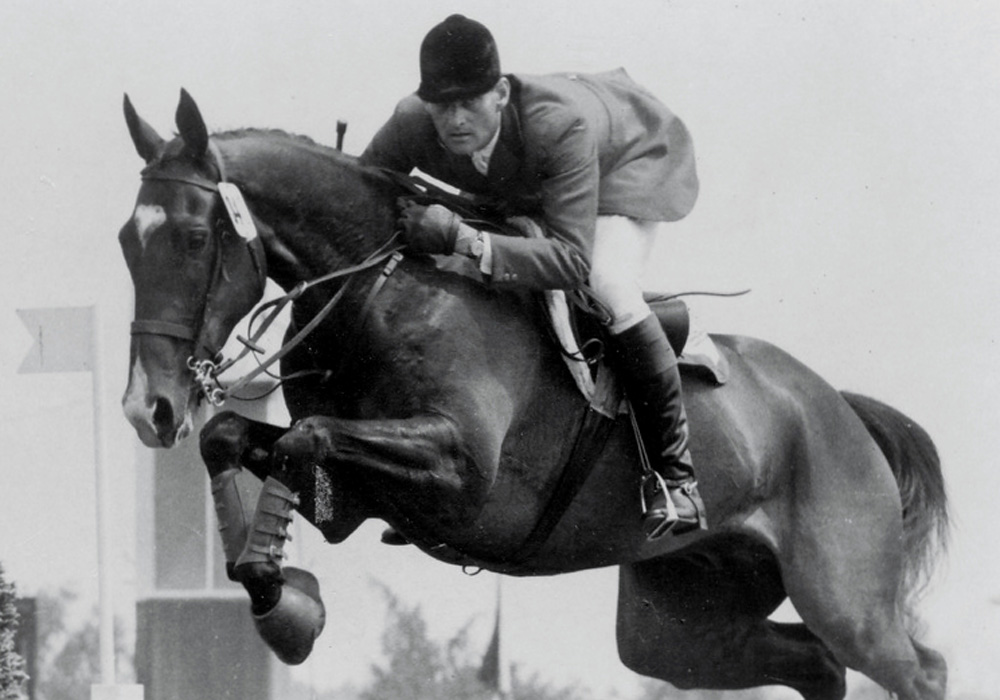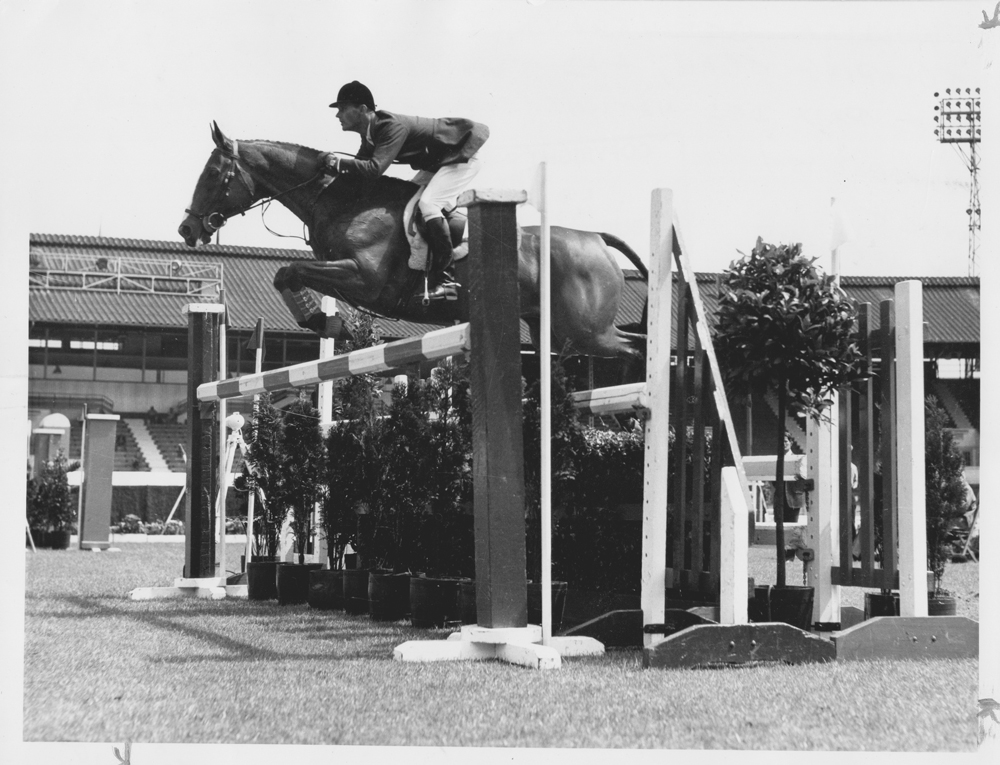William C. “Bill” Steinkraus, the first U.S. show jumper to win an individual Olympic gold medal, died on Nov. 29 at the age of 92.
Steinkraus is considered by many to be one of the best riders in the sport’s history. In addition to his individual gold riding Snowbound at the 1968 Mexico City Olympic Games, he also won team silver at the 1972 Munich Olympic Games on Main Spring and at the 1960 Rome Olympic Games on Riviera Wonder and team bronze at the 1952 Helsinki Olympic Games on Hollandia. Steinkraus competed for the United States on five Olympic show jumping teams between 1952 and 1972 and served on many Nations Cup teams as well. He was fourth individually at the 1960 World Championships in Venezia, Italy, riding Ksar d’Esprit.

Bill Steinkraus on Snowbound.
Steinkraus was born on Oct. 12, 1925, in Ohio but grew up in the Westport, Conn., area. His family was not involved in horses, but Steinkraus was drawn to horses and started riding at age 10. He was a student of the legendary trainers Gordon Wright and Morton W. Smith. In 1940, Steinkraus won the AHSA Junior Horsemanship Cup, which would later become known as the AHSA and USEF Medal. In 1941, he won the ASPCA Maclay Final.
After his equitation final wins, Steinkraus attended Yale University (Conn.), but he put his studies on hold after his freshman year to serve in the U.S. Army, where he was part of the 124th Cavalry Regiment during World War II, serving until the end of the war in 1945. Upon his return to the States, he completed his degree at Yale, graduating in 1949.
Steinkraus also returned to the saddle and was invited to join the U.S. Equestrian Team in 1951. He served as the U.S. team’s captain for 17 years and was inducted into the Show Jumping Hall of Fame in 1987. Steinkraus was known for his impeccable style of riding, and he rode his entire career as an amateur. He balanced his time in the saddle with a career on Wall Street and was also an accomplished violinist.
“He was so interested and better yet, knew about so many things,” said Kathy Kusner, a lifelong friend and teammate on many USET teams. “To talk to him about anything was really terrific because he just knew so much. He was one of my favorite people.
ADVERTISEMENT
“He was a beautiful rider and did things his way,” she continued. “Every single day when we were in Europe or wherever, and we had to go left, Billy always turned right, to do his own thing. And the reason why was that his own thing was better. And that was so cool. Billy never, ever did anything but his own thing. And his own thing was the right thing to do.”

Bill Steinkraus on Sinjon.
Steinkraus retired from active competition in 1972, but he continued to serve the sport in an administrative role. He was elected president of the USET in 1973, became its chair in 1983 and then chair emeritus in 1992. He was a director at the American Horse Shows Association (now USEF) for more than 40 years and judged at Olympic Games, World Championships, World Cup Finals and Pan American Games. He was president of the FEI World Cup Committee for 10 years.
Steinkraus was also a noted author, penning Riding And Jumping in 1961, The Horse In Sport in 1987, Reflections On Riding And Jumping: Winning Technique For Serious Riders in 1991, and Great Horses Of The United States Equestrian Team in 1997.
Steinkraus lived at his Great Island estate in Darien, Conn., with his wife, Grand Prix dressage rider Helen Steinkraus, who died in 2012. They had three sons, Eric, Philip and Edward.
Steinkraus wrote for the Chronicle as well, including “My Memories Of Snowbound,” a must-read tribute to his partner for Olympic gold. In 2008, George H. Morris wrote of some of Steinkraus’ wisdom in “Bill Steinkraus’ Two Dozen Useful Aphorisms.”















